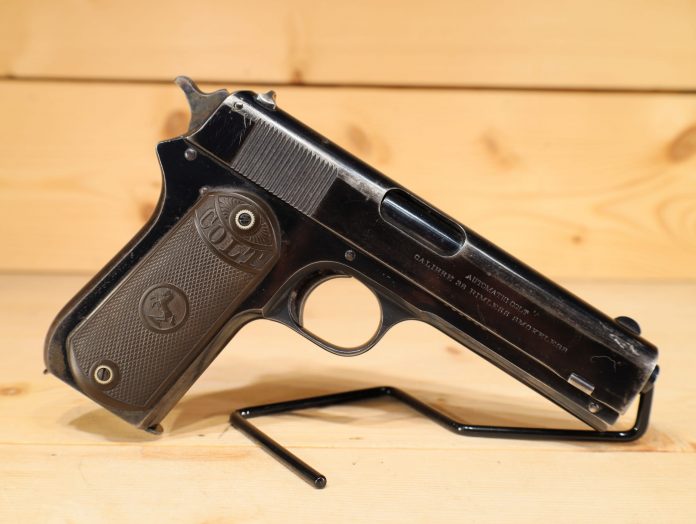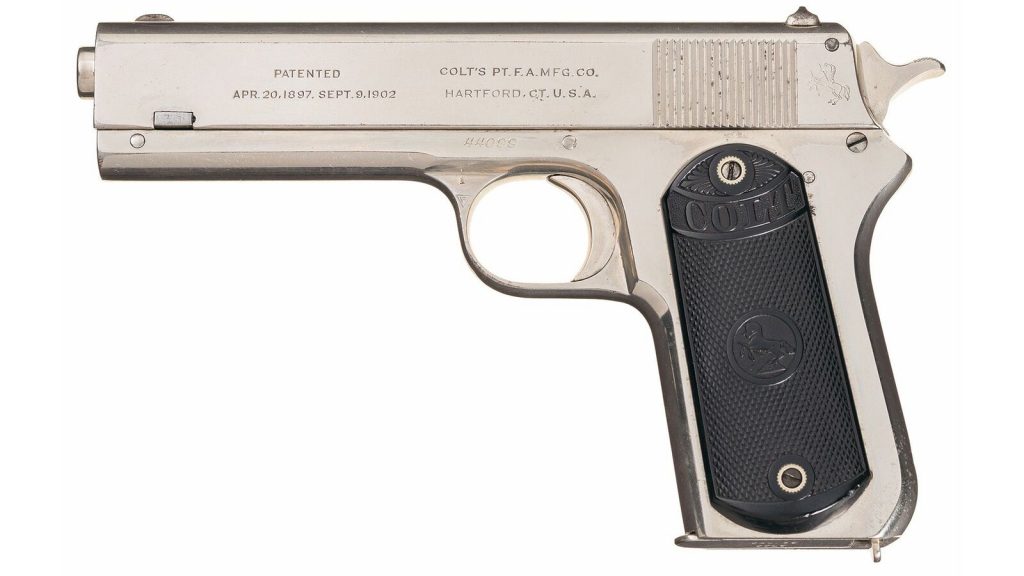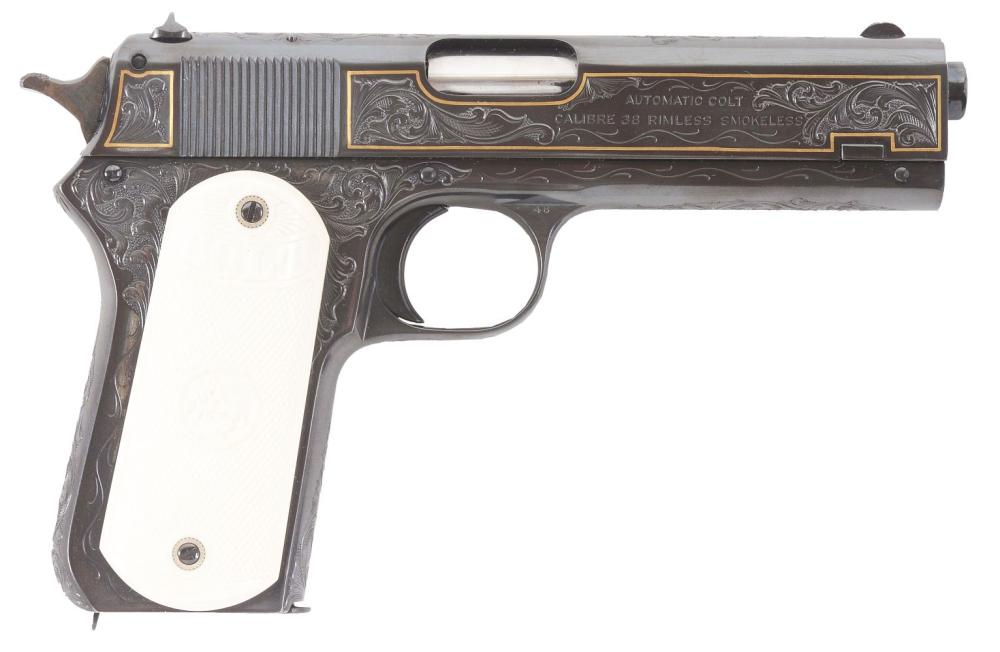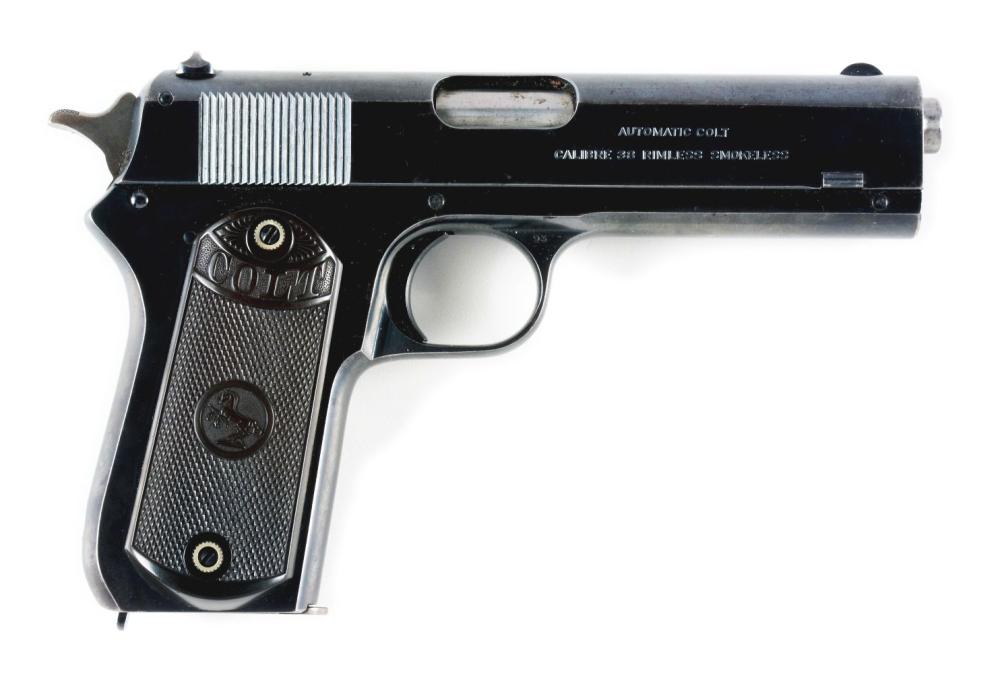
The Colt Model 1903 Pocket Hammerless often sits in the shadow of the Colt M1911. Both guns share a creator in John Browning, and both guns were and remain well-loved. One pistol that’s seemingly faded from the minds of gun enthusiasts is the M1903’s lesser-known brother. The Colt M1903 Pocket hammer. Your mind might be thinking, oh, they made a version of the 1903 with an exposed hammer. That’s what I thought upon hearing that name.
After even a cursory search, it’s easy to see that not, that wasn’t the case at all. Outside of a very similar name, the Pocket Hammer and Pocket Hammerless have nearly nothing in common. Except that Colt produced them and Browning designed them. The Model 1903 Pocket Hammer was never as successful as the Pocket Hammerless guns. As the name implies, they began production in 1903, but production ended in 1927.
The Lineage of the 1903 Pocket Hammer
When you look at the Colt 1903 and 1908 Pocket Hammerless guns, it’s easy to see some resemblance to the 1911. They have distinctly similar external designs. With the Pocket Hammer, it goes beyond just similar looks. The 1903 Pocket Hammer is a bit of an uncle to the 1911.

The Pocket Hammer is derived from the Colt Model 1902. In fact, it’s just a compact version of that very gun. The Model 1902 comes from the Model 1900. The Model 1902 is the result of incremental changes to the Model 1900. When the United States became interested in an automatic pistol, they initially tested the 1902. The 1902 became the 1905, and eventually, over time, and with changes suggested by the US Ordnance Board, we got the M1911.
Breaking Down the 1903 Pocket Hammer
The M1903 Pocket Hammer is an interesting gun. Its predecessor, the M1900, was the first short recoil gun, and much like grandad, the M1903 Pocket Hammer used a short recoil operation. The famed Pocket Hammerless guns used a much simple straight blowback operation. However, the Pocket Hammer used a short recoil design and utilized the more powerful .38 ACP cartridge.
The gun used a single stack magazine that held seven rounds of .38 ACP. The Model 1902 featured a 6-inch barrel, but the pocket Hammer trimmed things down to about 4.5 inches. It’s still fairly large, with an overall length of 7.75 inches. The gun weighed 1.96 pounds. By all accounts, it’s a big gun, something we’d considered full-size.

A single action trigger and exposed hammer give it big 1911 energy. Unlike the 1911, the Colt 1903 Pocket Hammer used a two-link locking system. The downside to dual links was that the gun required a cross wedge in the slide. This cross wedge sat near the muzzle for stripping purposes. If this wedge came loose, the slide could fly rearwards and hit the user. (Beretta didn’t pioneer launching slides.)
The gun looks like what would happen if I tried to draw a 1911. It has a much straighter grip, and a good bit of the barrel sits exposed. The ejection port is rather small, and the magazine release is at the bottom of the grip and not a press button on the side.
Browning loved his safeties, but the 1903 Pocket Hammerless has none. No frame safety, no grip safety, and no magazine safety are present. It’s bare, and your safety is your trigger finger.

The Cartridge
Colt and John Browning created the .38 ACP. It’s an interesting round that could launch a 115-grain round at 1,150 feet per second. It’s a bit like a slightly weaker 9mm Parabellum. It bears mentioning that the original .38 ACP loads were much more powerful and could fire a 130-grain round at 1,350 feet per second. The problem was that this proved too powerful for the Colt M1900, and they trimmed the power down a bit.
The .38 ACP never gained massive popularity, and it was constrained to the Colt Model 1900, 1902, and 1903 Pocket Hammer. It’s not popular, but it is an interesting footnote in the intermediate handgun cartridge world. 9mm parabellum would be produced only a year later. When the Colt pistol died out, the round seemingly did as well. It had a brief resurgence when Astra Model 400 pistols entered the surplus market.

The .38 Super and .38 ACP are dimensionally the same, but the .38 Super is much more powerful. While the .38 Super will load and even fire from an M1903 Pocket Hammer, it’s not a wise idea. Due to this being a known issue, companies used to produce .38 Super in nickeled casings to help avoid confusion and blown-up guns.
The End of the Pocket Hammer
The 1903 Pocket Hammer saw some minor adoption by foreign forces. The Philippine Constabulary adopted the gun. A number found their way to Mexico and fought in the Mexican Revolution. Although it didn’t see anywhere near the success of the 1903 and 1908 Pocket hammerless, it’s an interesting part of the M1911 lineage.



